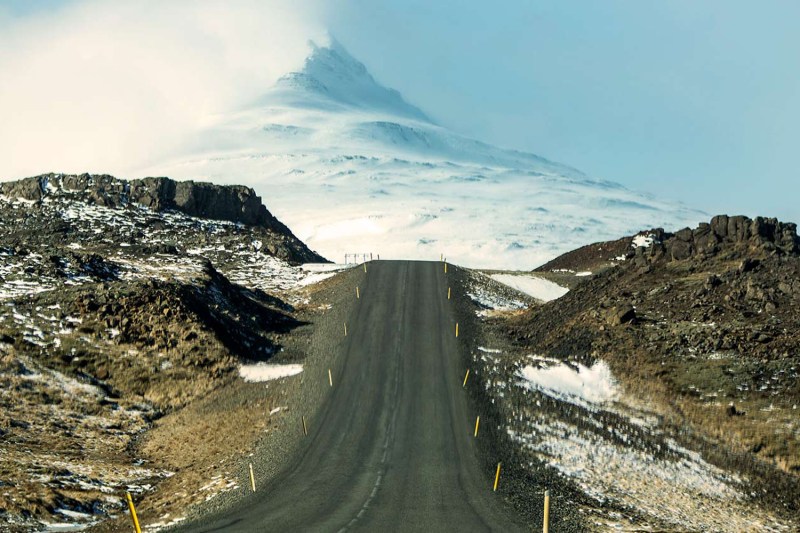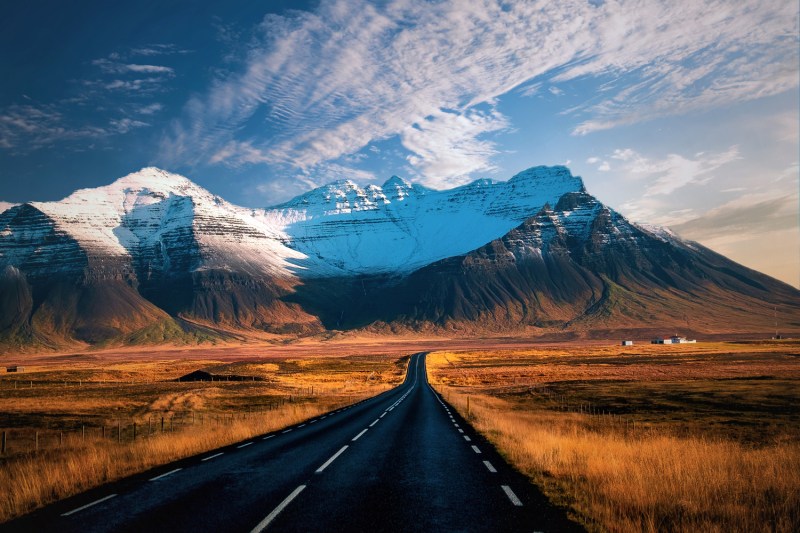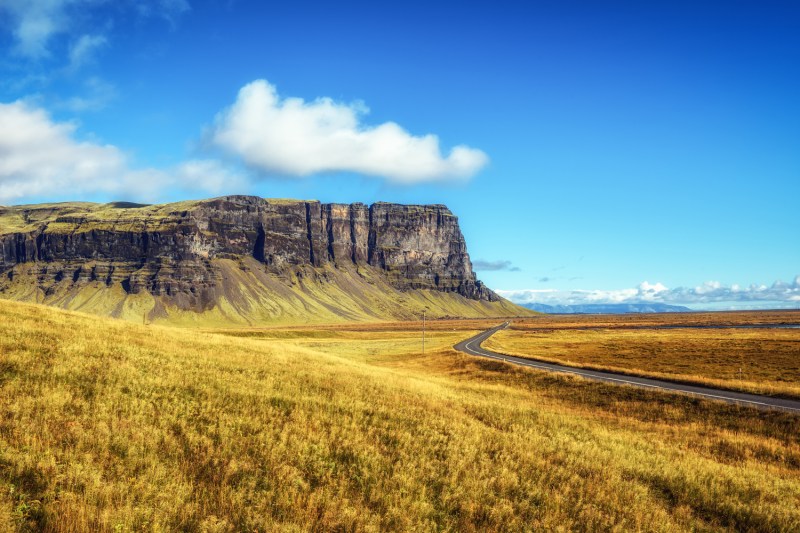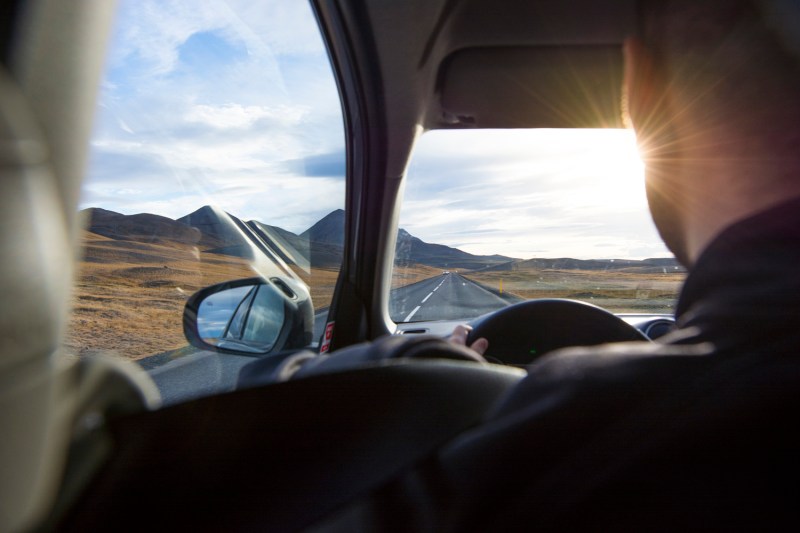
If you’ve explored many of America’s best road trips or wanted to visit unfamiliar routes, we highly recommend driving Iceland’s Route 1 (aka “Ring Road”). Route 1 is one of the best road trips in the world and for two good reasons. First, the route boasts a plethora of breathtaking natural wonders for you to photograph and explore, such as the majestic Dettifross Waterfall and the captivating ice caves of Vatnajökullm.
Finally, you’ll get a chance to see the Northern Lights magically adorn the sky. For many of us, it’s a dream come true. Below, we’ve compiled everything you need to know about navigating Ring Road for an unforgettable Icelandic road trip.
Related Guides
When to Go

The ideal time to visit is in July and August when the weather is the mildest and most predictable. However, we’d recommend braving the slightly cooler temps during shoulder season, which is around September and October. The crowds thin out considerably, overall prices drop for hotels and tours, and the shorter days provide better opportunities for spotting the Northern Lights.
What to Pack

Cell Phone
The Ring Road is a well-traveled route. Even so, nasty weather — particularly in winter — can swing in fast and force an unexpected overnight stay on the side of the road. No matter how far you are or aren’t planning to get off-grid, it’s wise to pack a cell phone. If you have an unlocked cell phone, several stores in Reykjavik (like Vodafone) sell prepaid SIM cards to ensure you have easy access to the web for GPS maps and weather, plus the ability to call for emergency services should the need arise.
Fuel
Gas stations dot the landscape along Route 1, but it’s best to fill up where you can to prepare for inclement weather. Fuel in Iceland is pricey (around $7.50-8.00 per gallon), and travelers can expect to pay around $300 (USD) in total to drive the entire route. Many gas stations, even those in the countryside, also offer basic groceries, plus pre-made sandwiches and hot soups.
Groceries and Sundries
To properly stock your campervan with food before you go, stop on your way out of Reykjavik at any supermarket. The local Bónus chain will have everything you need for the trip. It’s also a great place to stock up on other road trip essentials. While it’s a well-traveled route, parts of it are still remote, which means no access to things like running water (read: toilets). So be sure to grab plenty of toilet paper and bottled water if need be.
How to Go

Given its popularity, there’s no shortage of guided bus tours that travel all or part of Iceland’s Ring Road. While such tours will present you with all the highlights, a self-drive tour is the way to go, especially for adventurers. Opt to either rent a car or, the better option in our opinion, rent a campervan.
These self-contained vans from companies like Happy Campers provide everything an adventure traveler might need for a week on the road. Inside, renters will find fold-flat beds, state-of-the-art heating systems, sinks, electric coolers, gas grills, and large rear windows. Newer, upgraded models are typically powered by solar panels to provide virtually unlimited off-grid travel. If you’re planning to get way off-grid, inquire about a proper 4×4 campervan model. This mode of travel allows you to go at your own pace, plus the rental cost covers both transportation and accommodation.
While the 825-mile journey could be done in one very long day, count on 7-10 full days to allow ample opportunity to stop for photos and hikes along the way. We can’t overstate just how much there is to see — there’s a reason it’s considered one of the most beautiful road trips in the world.
Where to Go

The two-lane road circles the whole of the island. It’s quite possible to drive the entire Ring Road and never diverge onto its many side roads and trails. Without ever leaving the pavement, you’ll glimpse some of the most otherworldly landscapes in the world, including lava flows, pristine valleys, and stunning waterfalls.
On day one, start east of Reykjavik at The Golden Circle with a visit to Thingvellir National Park — a site of massive geothermal activity. On your way back to Route 1, overnight in Árborg before heading to two of Iceland’s most iconic waterfalls, Seljalandsfoss and Skógafoss Waterfalls, the following morning. If you have time, stop at Sólheimajökull Glacier for a glacier hike before moving to Sólheimasandur Beach to photograph the world-famous plane wreck that lies on its shores. From here, don’t miss the ice caves of Vatnajökull glacier and overnight in the quaint fishing village of Höfn.
Once you’ve left Höfn, you’re nearing the vast, wild, and most rugged part of Iceland where the towns and people begin to thin out considerably. With even less light pollution, this is an ideal location to witness the Northern Lights. Pass through the Fáskrúðsfjarðargöng tunnel and you’ll emerge in the country’s Highlands. This long stretch of virtual wasteland can prove difficult to drive in winter (which is where that 4×4 campervan would come in handy). Make time to stop at Dettifoss Waterfall, which is the most powerful and largest waterfall by volume in all of Europe.
Once back on Route 1, you’ll soon encounter the Námafjall Hverir geothermal area, which is one of the most volcanically active regions in Iceland. From here, you can spend the night in nearby Akureyri, the country’s second-largest city. There are plenty of activities in this capital of the North, including whale watching and helicopter flights over the Holuhraun volcano. Numerous side trips are possible just outside of Akureyri or, if you’re running short on time, you can simply head straight back to Reykjavik. It’s also worth the admittedly long drive to explore the Snæfellsnes Peninsula (often referred to as “Little Iceland”), which is home to Iceland’s most photographed waterfall, Kirkjufellsfoss.



